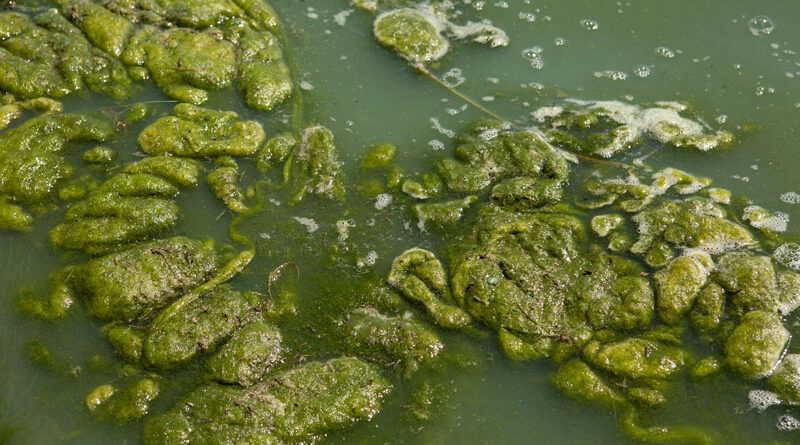AHS warns of cyanobacteria in Eagle Lake
By John Watson Local Journalism Initiative Reporter
Alberta Health Services (AHS) officically declared a cyanobacteria bloom advisory over Eagle Lake on Aug. 19, suggesting the public and their pets steer clear of the water body.
Cyanobacteria, also known as blue-green algae, is a naturally occurring bacteria that, when forming in excess, poses a health risk to humans and domestic animals.
Alyssa Ness, AHS spokesperson, said the best thing for people to do in instances such as this is to simply avoid the body of water entirely and not risk contact with it.
“The harms that we can see in humans specifically results from contact with algal blooms,” said Ness. “People can experience skin irritation, rashes, sore red eyes and if they happen to ingest some of the water, they can have a sore throat, nausea and vomiting, diarrhea, abdominal cramping, or headache.”
For pets and domestic animals, ingesting significant quantities of contaminated water can result in the death of the animal.
Similarly, AHS is recommending people to avoid consuming anything from the lake, such as fish unless they are properly prepared, and to not water edible plants with water from the affected lake.
“We generally advise against people using contaminated lake water for their gardens because it’s near impossible to be sure how much of the toxin is taken up into edible forms,” said Ness. “We particularly advise against watering plants that may come into contact directly with the water – so things like cabbage and lettuce, where the leaves will be touching the contaminated water.”
If people do decide to consume fish caught from Eagle Lake, it is advised to only eat the fillets, and properly dispose of anything else, such as entrails, carcasses and skin.
Cyanobacterial blooms are relatively commonplace in Alberta, as they tend to show up on slow moving or stagnant bodies of water across the province.
An excess of heat and sunlight will also encourage the growth of cyanobacteria blooms in a given body of water, of which Alberta has gotten lots of over the course of the summer.
If a person has comes in contact with a contaminated water body, Ness explained symptoms will typically occur within three hours of contamination and will resolve on their own over the course of a few days.
“Some people have described the symptoms as being similar to hay fever or an allergic reaction and it runs its course,” said Ness.
The advisory over the lake will remain in place until the end of the summer when the weather cools enough for the algae bloom to die off.

